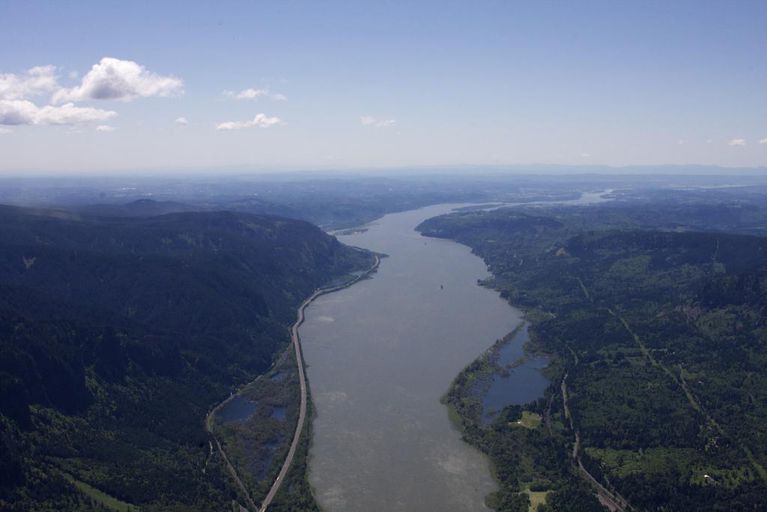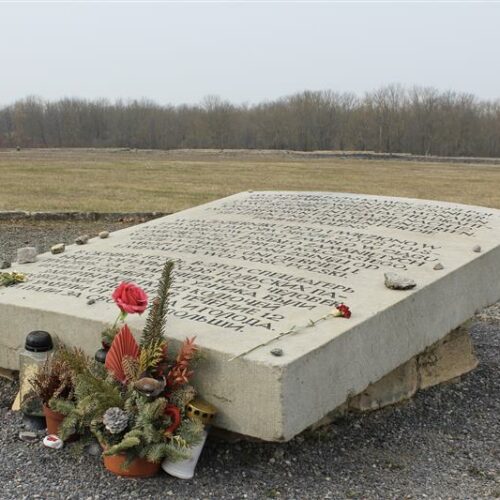
Preliminary agreement reached for a modernized Columbia River Treaty
WATCH
Listen
(Runtime 1:01)
Read
After more than six years of difficult negotiations, the U.S. and Canada have figured out some key points of the Columbia River Treaty, a critical water treaty that provides flood control and a consistent river flow for hydropower.
“This modernized treaty regime will continue to protect vibrant cities and shoreline communities from flooding and advance our clean energy goals through clean hydropower generation,” said Rachel Poynter, the U.S. Department of State’s Western Hemisphere Affairs deputy assistant secretary.
The new agreement will help manage the waterways for the next 20 years.
The treaty will be updated with what Poynter called “a vital and overdue emphasis” on ecosystem improvement and collaboration with U.S. tribes and Canadian First Nations.
The two countries initially ratified the treaty in 1964. In recent years, the U.S. said Northwest ratepayers paid too much for Canada to manage the water flowing over the border. Canada argued it underpaid for its services.
Previously, the province of British Columbia received hydropower generated in the Northwest, which was worth hundreds of millions of dollars. That share of downstream power benefits is known as the “Canadian entitlement.”
Now, both governments have come to an “agreement in principle” to update the treaty. The updates will allow the U.S. to keep more hydropower and Canada to import and export more clean energy.
The new agreement will protect Northwest ratepayers, said John Hairston, the Bonneville Power Administration administrator and CEO.
“The new terms represent a substantial reduction from the current amounts of energy and capacity BPA returns to Canada,” Hairston said in a media briefing call.
Senior administration officials said, while market prices vary, the Canadian entitlement would cost around $2.8 billion over 20 years under the current treaty. That price would drop to $1.5 billion over 20 years under the new preliminary agreement, a savings of around $70 million in its first year.
The relief on the entitlement begins immediately, Hairston said. In August, the entitlement will be reduced to 60% of what it is today. By 2033, it will be less than 50% of what it is today, which means the U.S. will gain about 230 more megawatts of energy than today’s energy generation.
“These new terms will go a long way towards helping meet the growing demands for energy in the region and avoid building unnecessary fossil fuel-based generation,” he said.
Transmission that was previously used to deliver the entitlement was owned by the Bonneville Power Administration. Now, it will be transferred to Canada, he said. That will give Canada more flexibility and reduce the administration’s costs.
In addition, the Bonneville Power Administration will keep coordinating with Canada about flow augmentation for migrating fish, like salmon and steelhead. Now, that coordination will be more certain and long term, Hairston said.
It will also give tribes and First Nations more say and will make considerations for the changing climate — a new third prong to the treaty.
However, fish advocates said the agreement prioritized flood risks and power needs over ecosystem health. The river’s health should be an “explicit purpose and priority in a new, modernized treaty,” said Joseph Bogaard, chair of the Columbia River Treaty non-governmental organization caucus and the executive director of Save Our Wild Salmon.
“The Columbia Basin is out of balance today. A modernized treaty must become a tool for restoring balance,” he said. “In its current form, it means continued risk and uncertainty for this historic river, its native fish populations and the many benefits they bring to our communities.”
According to a fact sheet released by the U.S. Department of State, the U.S. will establish an Indigenous-led group that will recommend how the treaty can better support ecosystem health and Indigenous culture.
British Columbia leaders said they wouldn’t have signed the agreement if it didn’t have ecosystem improvements factored in, especially in the British Columbia Basin.
“Modernizing the Columbia River Treaty is a once-in-a-generation chance to look beyond the original treaty’s goals of power generation and flood-risk management,” said Katrine Conroy, the British Columbia minister responsible for the Columbia River Treaty.
Keith Crow, with the Syilx Okanagan Nation chiefs executive council, said this agreement is a good step forward. However, there’s still a lot of room to improve past and ongoing impacts to his nation’s land.
“But I now have real hope that one day, as a result of our efforts, I will see my grandchildren and other future generations exercising their rights harvesting n̓ty̓tyix (salmon) in the nxw̌ ntkwitkw (Upper Columbia region),” Crow said in a statement.
Canada will continue to store water at its three dams on the upper portion of the Columbia, known as pre-planned flood-risk management. That will help protect homes and communities from flooding downriver.
“The operational certainty provided by this flood risk management space allows for other benefits, including navigation ecosystem water supply for agriculture and the protection of tribal interests,” said Michael Connors, assistant secretary of the army for civil works.
In a statement, U.S. Sen. Maria Cantwell, D-Washington, called this agreement a “positive step forward.”
“The region will need to review and weigh in on the details. But I appreciate President Biden and Prime Minister Trudeau reaching a smart agreement to grow clean energy capacity in both countries and create opportunities for future cooperation that could expand electricity generation at a time when the region has big demands for more power,” Cantwell said.
Each year, the Columbia River and its tributaries generate 40% of hydropower produced in the U.S. The river system also helps $8 billion in crops and transports 42 million tons of commercial cargo, according to the Biden administration.
The two countries plan to draft formal amendments to the treaty in the next few weeks. The updated treaty must be ratified by the U.S. Senate.















